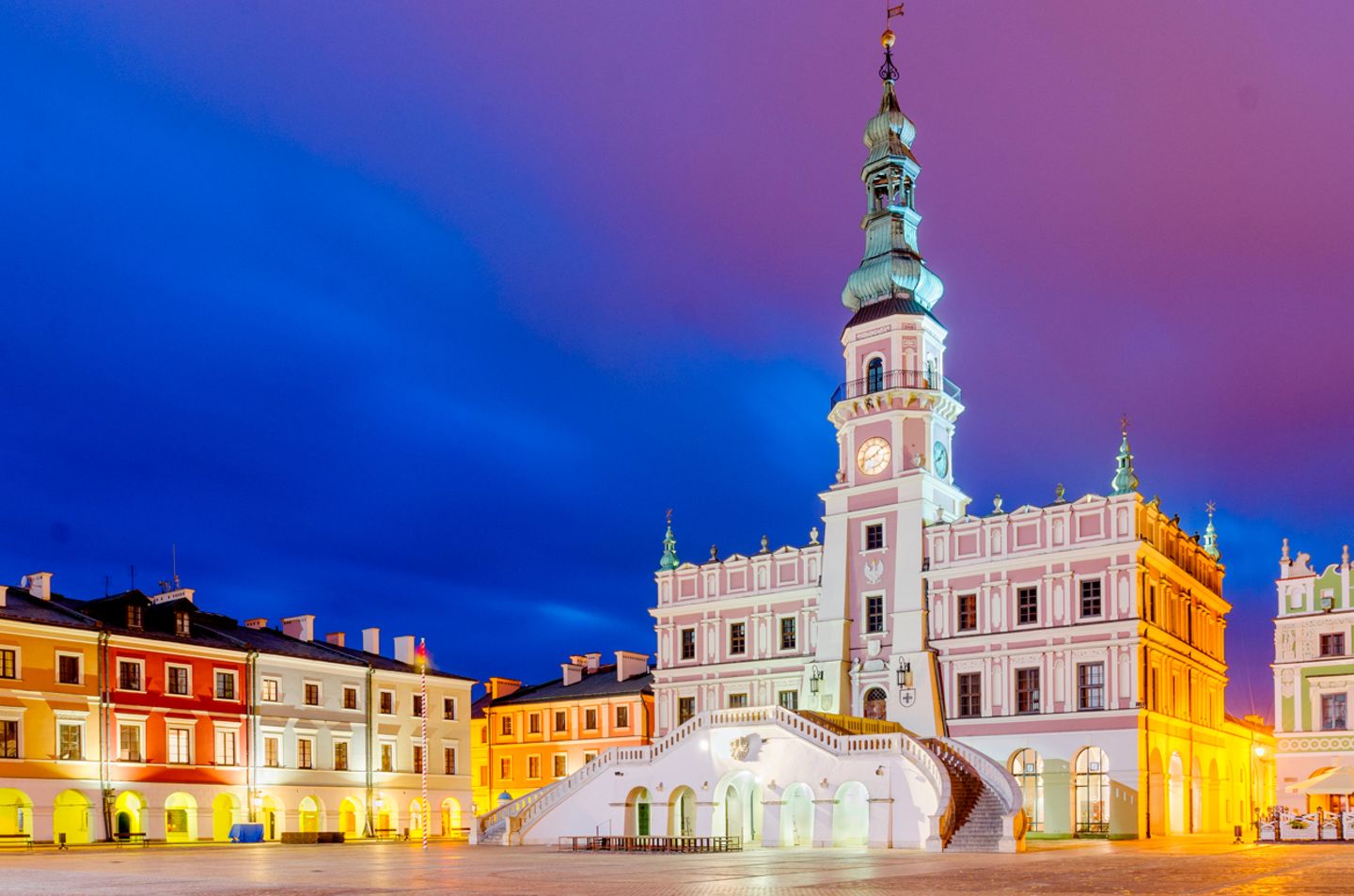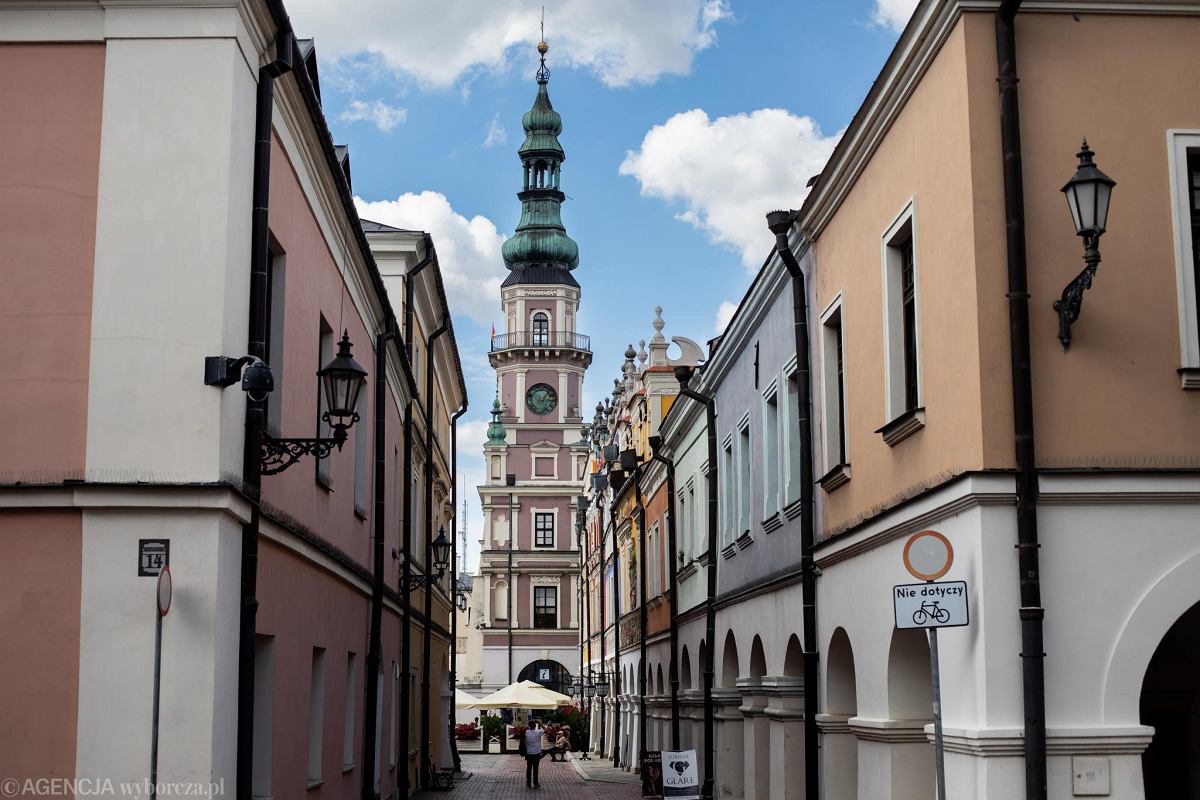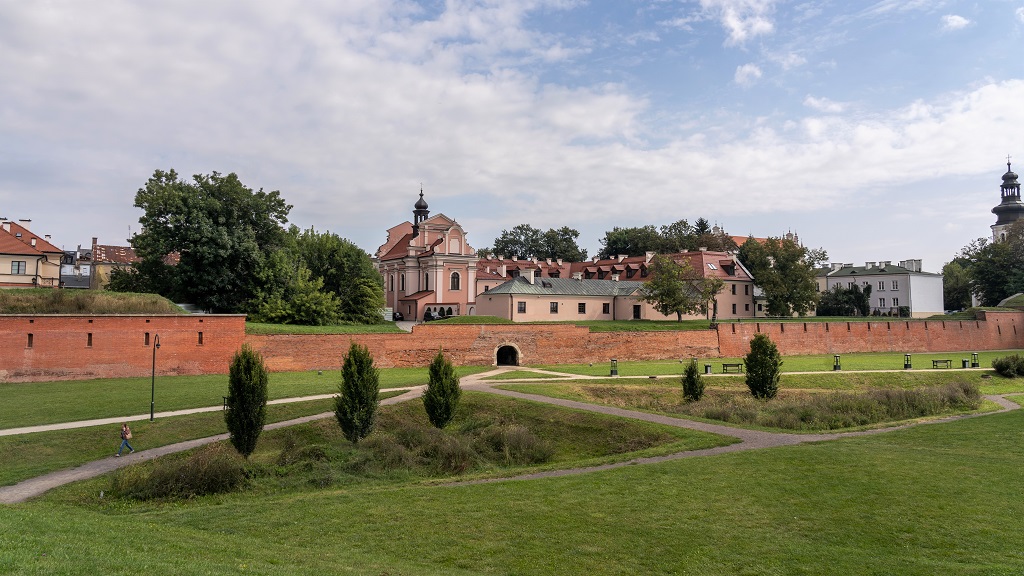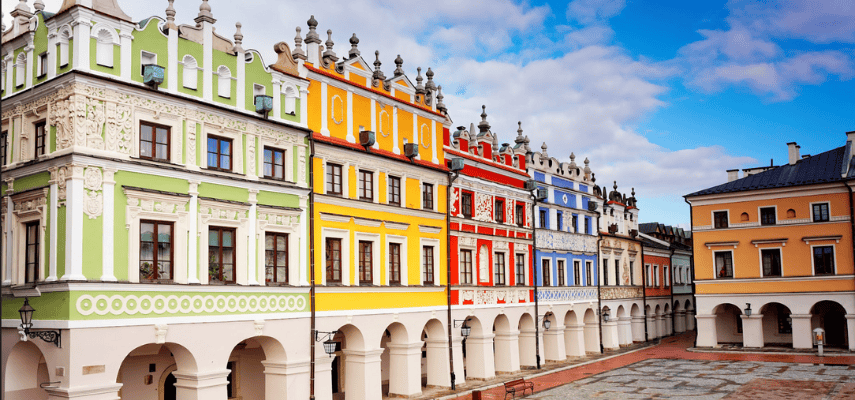Zamość

Protocol of Intent for Cooperation from 4 June 2005
Population: 59,274 inhabitants
Area: 30.34 km2
Country: Republic of Poland
Region: Lublin Voivodeship
Mayor: Rafał Zwolak
Official website: http://www.zamosc.pl
Location
Zamość is a city in Lublin Voivodeship of Poland, located 240 km southeast of Warsaw. The city is situated in the Vistula river basin, on one of its tributaries. Zamość is located in the southeast of Lublin Voivodeship, 70 km from the Ukrainian border. The city covers an area of 30.34 km2.
The uniqueness of Zamość lies primarily in the fact that it was built in an open field as a complete urban architectural complex. This allowed it to be designed perfectly, leading to its inclusion in the UNESCO World Heritage List.
Today, Zamość serves as an important economic, cultural, and scientific centre in the southern part of the Lublin Voivodeship. The city is gradually gaining a leading position on the country's tourist map. Zamość is a well-known starting point for travellers across Roztocze, to Zhovkva, Lviv, and Lutsk.
History
While planning the construction of the city, Chancellor and Grand Crown Hetman Jan Zamoyski considered several options for its location. He ultimately chose a place where two rivers met – the Wieprz and the Kalinowica. Only the natural terrain limited the plans of the Italian architect Bernardo Morando. He designed a city surrounded by powerful fortifications with a clear arrangement of streets. The new building complex, according to Renaissance ideals, was constructed like a living body: the Zamoyski residence became the head of the city; the main street, the spine; the collegiate church and the Zamoyski Academy, the shoulders; the three city markets, the internal organs; and the bastions that defended Zamość, its arms, elbows, and legs. Jan Zamoyski signed the Act of Foundation of the city on 10 April 1580. The geographical location of the city at the crossroads of major trade routes was highly advantageous. The city granted permission for Greeks, Armenians, and Sephardic Jews to settle.

The right of deposit, along with the exemption of merchants from taxes, customs duties, and local fees, all contributed to the rapid development of the city. In the 17th century, Zamość was one of the most powerful Polish fortresses, as well as an important centre of culture and science. The fortress lost its importance in 1866, ceasing its function for meetings, instead of being a means of warfare. A tragic chapter in the history of the Zamość fortress is recalled by the Rotunda (an old fortress gate), which now serves as a memorial to the victims of World War II. To this day, the development of the Old Town, with its finest structures, has been preserved almost without significant changes. In 1992, Zamość was included in the UNESCO World Cultural Heritage List, marking it as one of the most notable achievements in architectural monuments and construction works in human history.
Tourism
Thanks to the fact that Zamość did not undergo the transformations of a large city but remained a Renaissance town, the architect's vision is still perfectly evident. The heart of the city is a beautiful market square measuring 100 by 100 metres, with eight streets that diverge perpendicularly from it in all directions. The Renaissance Town Hall, with its tall, slender tower, embraces the square with the wings of its stairs, which have served as a backdrop for many theatrical productions.
The original decorations, often crafted in an oriental style, have been preserved on the walls of the houses in the Market Square and the Old Town. Notable among these are the House Under the Angel, once the richest Armenian residence and now housing a historical museum; the Link House, adorned with statues of heroes from Greek mythology; and the Morandovskis' House, featuring magnificent portals. One of the most valuable sacred buildings in Poland is the Cathedral Church of St. Thomas, constructed during Jan Zamoyski's era. The Baroque-style chapel of the Zamoyski family is particularly impressive.
Today, the Market Square serves as a venue for meetings and cultural events. Every year in June and July, the Zamość Summer Theatre stages performances. Each summer, the city's residents and tourists welcome music bands from Poland, Ukraine, Germany, Spain, and many other countries.
There are numerous engaging museums in the city: the Zamość Museum (near the Town Hall, on the northern side of the Great Market); the Arsenal Museum of Colour and Weapons, with an outdoor exhibition; the Sacred Museum of Zamość Cathedral; the Old Town Museum and Synagogue; the Rotunda Martyrdom Museum; and the tourist trail in Bastion VII.

Culture and leisure activities
Zamość is a significant cultural centre in the region. Various cultural organisations and institutions operate here, facilitating numerous events related to theatre, music, dance, folklore, and history, including the Zamość Theatre Summer, the festival "Jazz na Kresach", the International Folklore Festival "Eurofolk," and others. The city also boasts numerous galleries and cinemas.
Economy
The city's economy is predominantly service-based, with numerous small and medium-sized enterprises leading the sector. There are also several larger manufacturing enterprises, including food processing plants, reflecting the agricultural dominance in the region.
Industrial enterprises in Zamość include a feed mill, a furniture factory, a frozen fruit production facility, a dairy cooperative, and manufacturers of agricultural machinery and parts, rotary pumps for the food industry, hygienic pumps, and bakeries. Among the large firms are a metallurgical line—a railway operator—and the Zamość Energy Corporation, an energy distributor in 11 districts of Lublin Voivodeship and Podkarpackie Voivodeship.

Zamość is the second-largest shopping centre after Lublin in Lublin Voivodeship. Tourism also plays a vital role in Zamość's economy, especially since the Old Town was inscribed on the UNESCO World Heritage List. This has led to the establishment of numerous facilities essential for this industry, including travel and tourism agencies and hotel accommodations.
